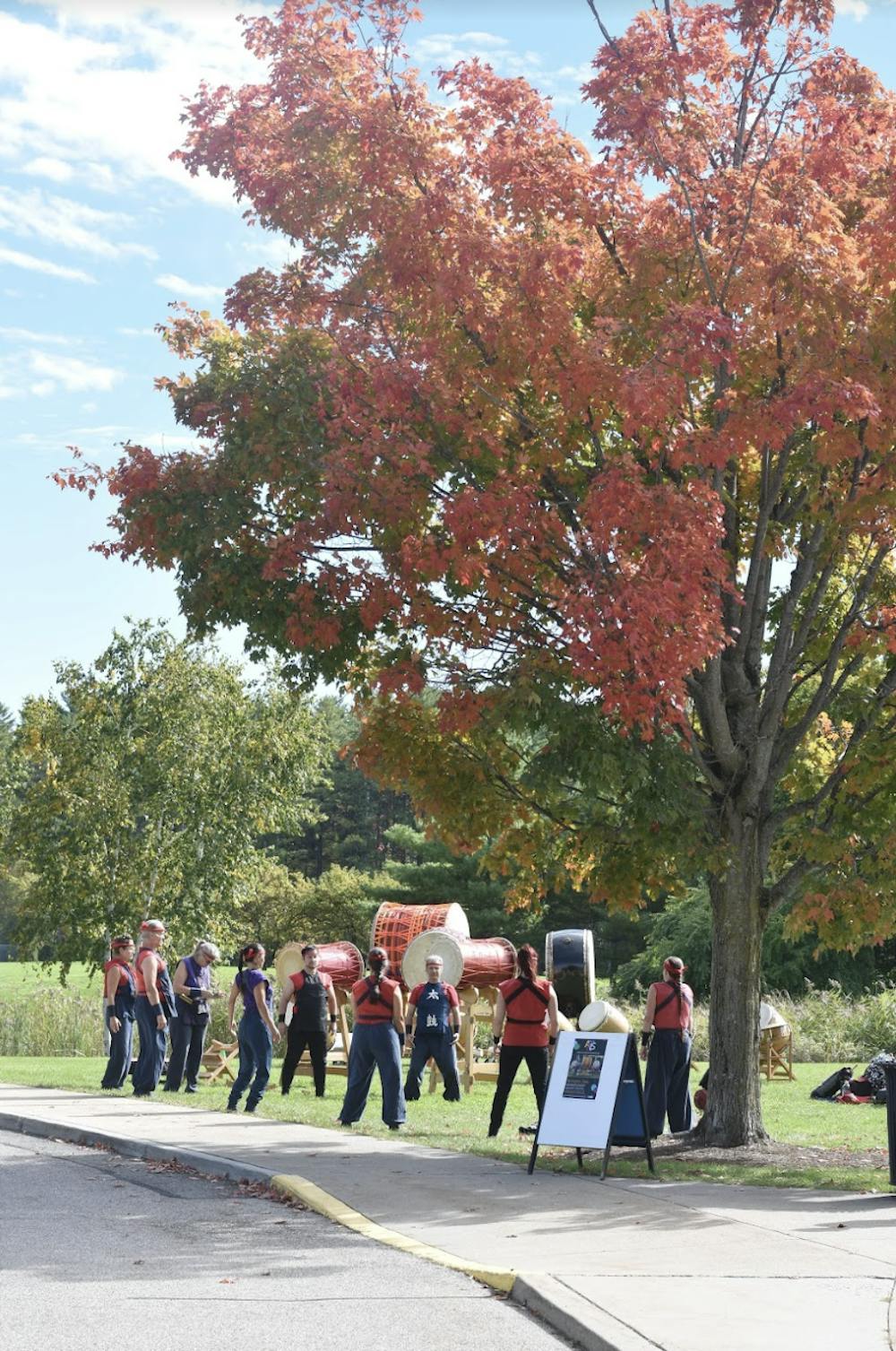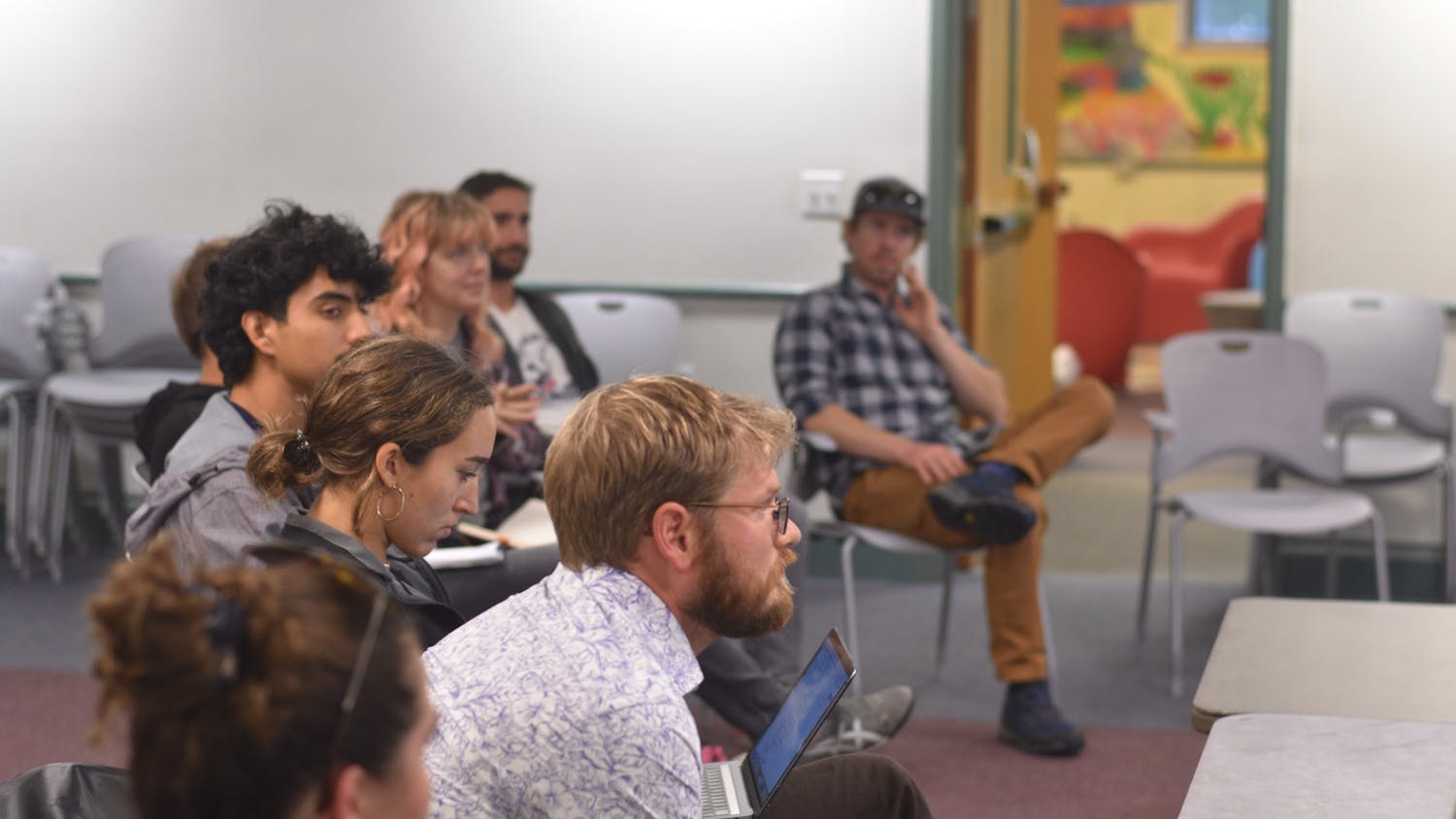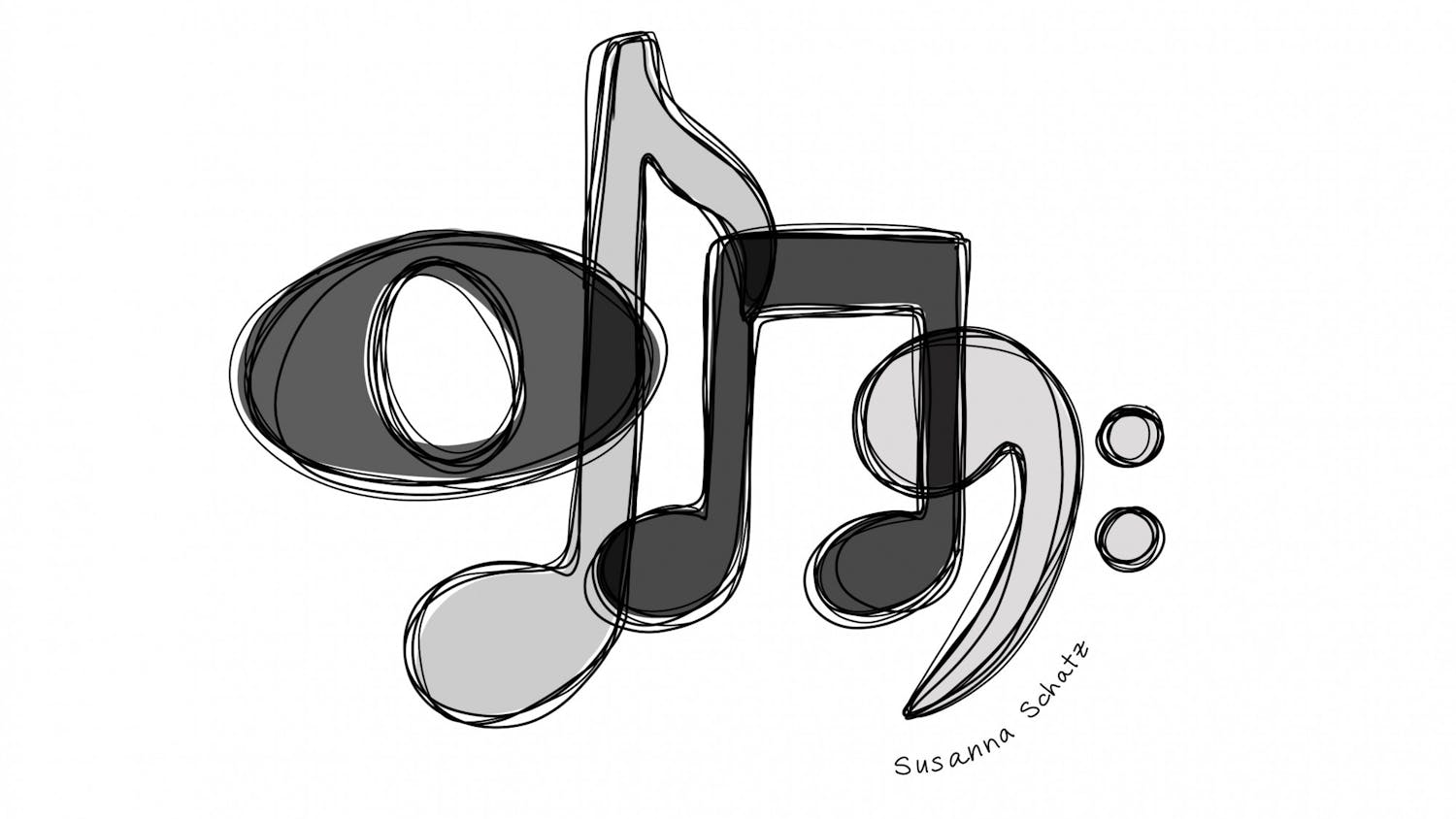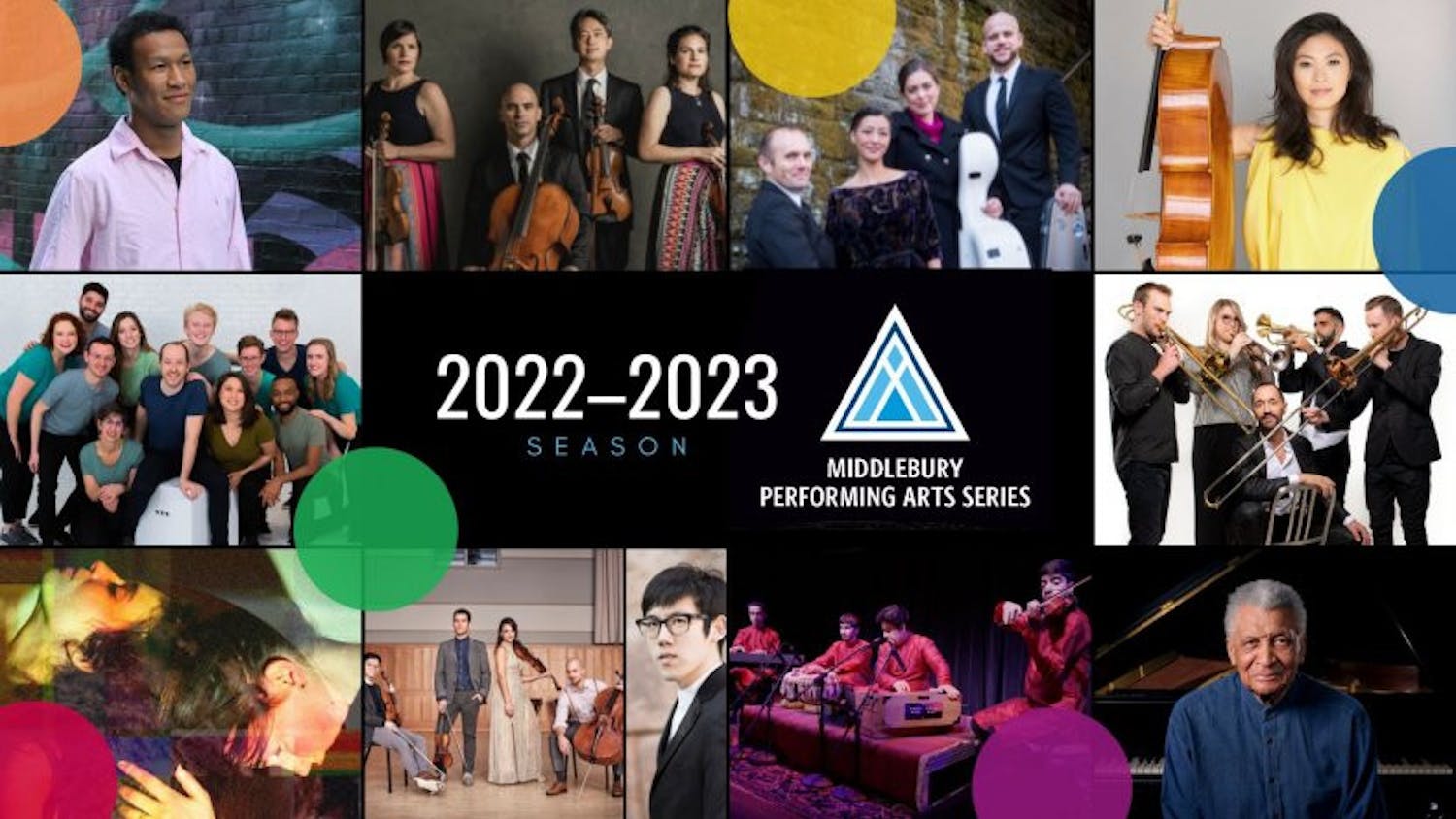As a guest of the Performing Arts Series of Middlebury College, Burlington Taiko visited Middlebury on Sept. 30 and Oct. 1 to introduce the community to the ancient Japanese tradition of taiko. The rhythmic and deep resonance of the drums created a musical effect of powerful beats that listeners of all ages could feel. The performances, as well as the history of this ancient art, captivated the Middlebury community not only on the days of the performances but in the workshops leading up to them.
Founder and leader of the Burlington Taiko Group Stuart Paton recalled hearing taiko in Japan, where he lived between the ages of six and eighteen, in a phone interview with The Campus. His neighbor practiced the art of taiko on the weekends, giving Paton a subconscious foundation to begin learning it himself.
“I knew my neighbor, Mr. Ishii, as a kimono fabric dyer. He would change the color of kimono fabric for new brides, so I knew him as an artisan,” Paton said. “And then one weekend he was playing Taiko in the park, and it was an exclamation-point-moment for me. He was way-cool already, but then he was taiko cool. And for a kindergartener going into first grade, this was mega awesome, especially for it being my first time hearing taiko and seeing it in person.”
The deep resonating sounds of the drum remained significant in Paton’s life through his move to the United States. In college, he heard a taiko performance again and was immediately drawn to learning it. He later studied taiko with Tanaka Sensei in San Francisco, who introduced taiko to the U.S. in the 1980s. Shortly after moving to Burlington, Vt., Paton started the Burlington Taiko Group. And since 1987, the group estimates that it has introduced half a million people to the art.
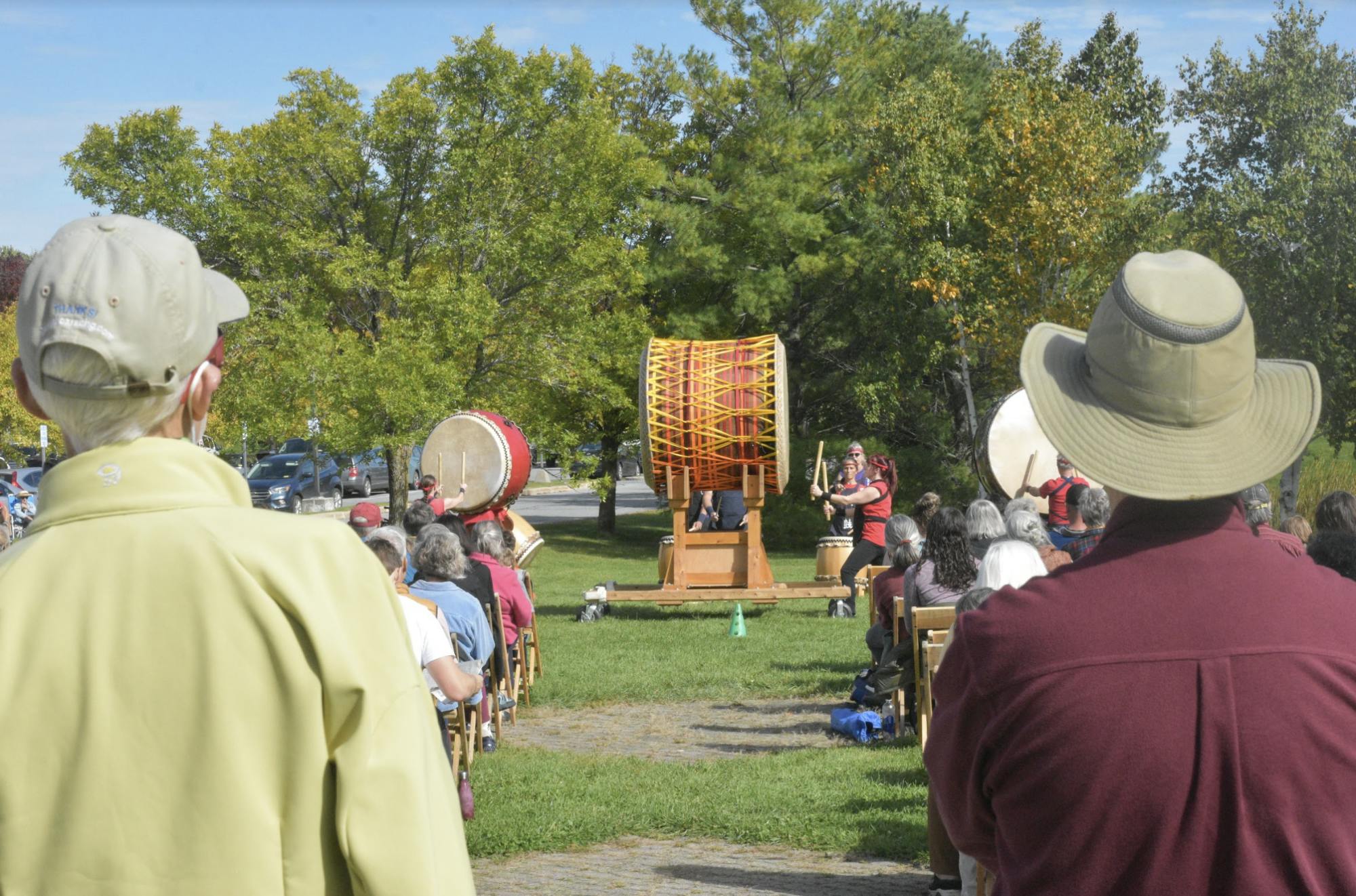
The Burlington Taiko group has traveled throughout the country, putting on performances for thousands of people. In fact, they have had over 200 corporate, public and collegiate performances, including performances at events such as the Boston Marathon and the Black Ships Festival in Newport, R.I.
“It was four hours of a serious river of running humans, and a percentage of them were responding to us noticeably. Some of them were stopping to take photos, some were dancing the jig, some were hopping and skipping because the taiko was making them so happy,” Paton said of his performance at the 100th Anniversary of the Boston Marathon. “It was the hugest flow of athletes in gratitude that I had ever experienced. And one of our future members was also running the marathon. He said, ‘I hear taiko, that can’t be taiko,’ and he recognized the piece of music we were playing… and he asked if he could play taiko for a couple of minutes and played on our 5-foot big drum — and he just stopped in the middle of the marathon… his eyeballs were like spotlights, he was so happy.”
The deep resonance and frequencies of the drum reach deep inside people, creating an effect that Paton explained as feeling new, yet familiar. The word “taiko” itself means “large drum” in Japanese, and refers to any type of drum formed from a large barrel and cow hide. The taiko drum was originally developed in India and used in Buddhist religious ceremonies. The drum then spread with Buddhism, arriving in Japan around 500 A.D. From there, it became an integral part of Japanese culture, used in spiritual healing, prayer, military fighting and dispelling evil spirits. Starting in the 20th century, the taiko drum was used in musical performances. Certain groups such as Ondekoza and Kodo gained popularity in Japan for their coordination and masterful skill in taiko. Their practices of communal living and discipline gave them unparalleled skill that mesmerized audiences.
Burlington Taiko’s performers train once a week for three hours to gain the coordination and skill necessary to achieve this effect. There is no improvisation in the performances; instead, the drummers memorize the entirety of their parts and solos.
The performances themselves are a mix of music and dance. According to Paton, each movement is meant to be efficient and potent. The drummer moves in a way that is like watching a martial artist work out a form. Each drummer is challenged to constantly concentrate on their movement as well as the movement of others. As well as mentally focusing on every hit, the drummers must be physically fit enough to perform songs up to ten minutes long.
Julia Davenport, a member of the group, stated that studying the art of taiko helps with concentration. By hitting the drums, she releases power from her body, converting it into deep, resonating sounds. The group is also challenged to perform about fifteen songs, which requires team building and coordination.
“I felt so much music-joy and community-joy, and this is what I want… so many people, from four-year-olds to alumni and elder community members were all walking together, and it felt lovely, and there were so many smiles,” Paton said, reflecting on Burlington Taiko’s visit to Middlebury. “And people who took short workshops were participating and people who just jumped in and grabbed instruments were participating. And after a week of sharing and teaching taiko in the greater Middlebury community, it felt wonderful.”
Editor’s Note: Senior Arts & Culture Editor Eliza King Freedman ’23 contributed reporting.

